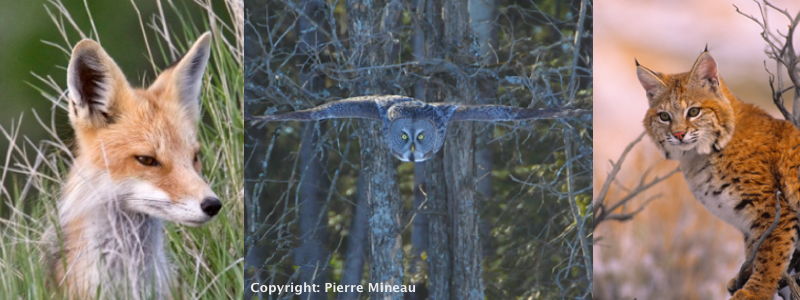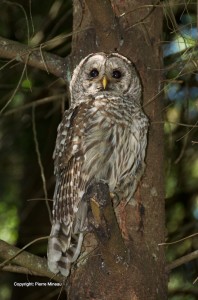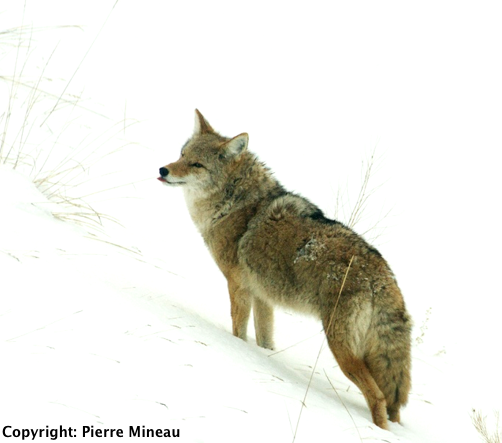Risks for Wildlife

Wildlife at risk
 Rodenticides are designed to kill mammals such as rats and mice. It should therefore come as no surprise that these products commonly poison non-target wildlife species. Numerous studies have documented harm to mammals and birds. Other vertebrate species, such as reptiles and amphibians, are also at risk. Most rodenticides work by disrupting the normal blood clotting or coagulation process so that dosed individuals suffer from uncontrolled bleeding or hemorrhaging. This hemorrhaging can occur spontaneously or from any cuts or scratches. Because internal hemorrhaging is difficult to spot, often the only indication of poisoning in exposed wildlife is that they are weak or listless. Signs of bleeding from the nose or mouth may be visible on occasion. Affected wildlife may be more likely to crash into structures or moving vehicles or to be killed by predators. This makes these poisonings even more difficult to document.
Wildlife poisonings have been documented in over 25 wildlife species including: San Joaquin kit foxes, Pacific fishers, golden eagles, bald eagles, bobcats, mountain lions, black bears, coyotes, gray foxes, red foxes, Cooper’s hawks, red-shouldered hawks, red-tailed hawks, kestrels, barn owls, great horned owls, long-eared owls, western screech owls, spotted owls, Swainson’s hawks, raccoons, skunks, squirrels, opossums, turkey vultures and crows.
Rodenticides are designed to kill mammals such as rats and mice. It should therefore come as no surprise that these products commonly poison non-target wildlife species. Numerous studies have documented harm to mammals and birds. Other vertebrate species, such as reptiles and amphibians, are also at risk. Most rodenticides work by disrupting the normal blood clotting or coagulation process so that dosed individuals suffer from uncontrolled bleeding or hemorrhaging. This hemorrhaging can occur spontaneously or from any cuts or scratches. Because internal hemorrhaging is difficult to spot, often the only indication of poisoning in exposed wildlife is that they are weak or listless. Signs of bleeding from the nose or mouth may be visible on occasion. Affected wildlife may be more likely to crash into structures or moving vehicles or to be killed by predators. This makes these poisonings even more difficult to document.
Wildlife poisonings have been documented in over 25 wildlife species including: San Joaquin kit foxes, Pacific fishers, golden eagles, bald eagles, bobcats, mountain lions, black bears, coyotes, gray foxes, red foxes, Cooper’s hawks, red-shouldered hawks, red-tailed hawks, kestrels, barn owls, great horned owls, long-eared owls, western screech owls, spotted owls, Swainson’s hawks, raccoons, skunks, squirrels, opossums, turkey vultures and crows.
Exposure Routes
Primary exposure and poisoning
Non-target wildlife species are often attracted to rodenticide baits. These are formulated to be tasty and alluring. This exposure can be reduced through a more careful placement and use of tamper-proof bait stations. Loose bait, whether pellets or poison grain, present the highest risk, the latter being particularly attractive to seed-eating birds and to many small mammal species.
Unfortunately, bait stations cannot stop all routes of exposure. House sparrows have been seen entering bait stations in urban environments. Other wildlife species may disturb and attempt to break in to bait stations. Cockroaches and other invertebrate species enter bait stations to feed. They are not affected by anticoagulant products but scatter bait material and carry the poison in their own bodies raising the potential for secondary poisoning.

Secondary exposure and poisoning
Rats and mice that feed on these baits can take several days to die. The poisoned rodents become increasingly weak, making them easy prey for predators. Hungry raptors or other wildlife can receive a lethal dose when they feed on the poisoned rats and mice. This is tragic not merely because hawks, owls, foxes and other animals are dying, but because wildlife predators provide us with valuable rodent control services – unless of course we kill them first. The biggest-selling rodenticides are of the so-called ‘second-generation’. These include compounds such as difenacoum, brodifacoum, bromadiolone and difethialone. Second-generation compounds were designed to kill rodents after a single feeding on bait. They are much more persistent than the first-generation compounds (warfarin, chlorophaninone, diphacinone) and clear very slowly from the body. In addition, second-generation rodenticides tend to be much more acutely toxic to non-target wildlife. As a result, the second-generation compounds are much more likely to poison predatory wildlife that eat live prey or carrion – whether targeted mice and rats or other species. These compounds are causing innumerable casualties among owls and hawks, bobcats, fishers and other predators. Rodenticides may now be the single most important source of mortality for some wildlife species. Where second-generation compounds are used, entire food chains are contaminated. Residues are even detected in species that typically feed on birds rather than on rodents.Distinguishing between exposure and impact
- What important physiological processes are impaired by low level rodenticide exposure; for example, a link between disease (mange) and rodenticide exposure has already been documented in mountain lions.
- Whether exposed wildlife are more likely to hemorrhage than animals who have not previously been exposed to rodenticides following re-exposure with the same or different rodenticide products.
Use of rodenticides for conservation purposes
References
- California Department of Fish and Wildlife. Rodenticides can harm wildlife; please use carefully.
- Stone WB, Okoniewski JC, Stedelin JR. 1999. Poisoning of wildlife with anticoagulant rodenticides in New York. J Wildl Dis. 35: 187–193.
- Uzal FA, Houston RS, Riley SP, Poppenga R, Odani J, Boyce W. 2007. Notoedric mange in two free-ranging mountain lions (Puma concolor). J Wildl Dis. 43: 274–278.
- Thomas PJ, Mineau P, Shore RF, Champoux L, Martin PA, Wilson LK, Fitzgerald G, Elliot JE. 2011. Second generation anticoagulant rodenticides in predatory birds: Probabilistic characterization of toxic liver concentrations and implications for predatory bird populations in Canada. Environ Int. 37: 914–920.


